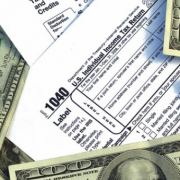Couples May Score A Bigger Tax Break With This Flexible Spending Account Strategy
 Working families who struggle to pay for child care may get some relief from 2021 changes to flexible spending accounts.
Working families who struggle to pay for child care may get some relief from 2021 changes to flexible spending accounts.
The American Rescue Plan, President Joe Biden’s $1.9 trillion stimulus package, boosted child-care assistance through temporary changes to dependent-care FSAs.
The law increased 2021 dependent-care FSA limits to $10,500 from $5,000, offering a higher tax break on top of existing rules allowing more time to spend the money.
As more companies adopt the FSA changes, couples can strategize to maximize their tax write-off, financial experts say. Families may not be aware of the dependent-care FSA limit increase to $10,500, particularly if their employers haven’t adopted the change yet.
“Some companies have pulled the trigger, others haven’t decided yet,” said attorney Evelyn Small Traub, partner of Troutman Pepper in Richmond, Virginia, where she focuses on employee benefits.
Dependent-Care FSA Benefits
Dependent-care FSAs reduce an employee’s gross income by putting money into a special account to cover annual care expenses for children or disabled adults.
Families may use this pre-tax money to pay for daycare, after-school programs, work-related babysitting, summer day camps and more. Since the money goes in before taxes, employees may save on payroll levies.
“A lot of clients don’t know what it is, and we’re talking to them about the benefit,” said certified financial planner Jake Northrup, founder of Experience Your Wealth in Bristol, Rhode Island.
While couples may be eager to sign-up for the new FSA limits, they may need to review their entire tax situation before deciding which spouse opts in, he said.
Filing Taxes Jointly
“If you’re filing jointly, the decision is pretty straightforward,” Northrup said.
For these couples, it typically makes sense to use the lower-earning spouse’s FSA, assuming both employers offer dependent-care FSAs with the new $10,500 limit. The reason: Lower earners may save more in Social Security and Medicare payroll taxes.
Social Security tax (6.2%) only applies to the first $142,800 of 2021 income. Medicare tax (1.45%) applies to all income, with an added .09% for those making over $200,000. For example, let’s say one spouse earns $225,000 and other earns $75,000. The spouse earning less than $142,800 pays for Social Security and Medicare taxes, for a total of 7.65%.
However, the spouse earning $225,000 pays for Medicare (1.45%) plus the additional Medicare (.09%), on income over $142,800, thereby slashing that person’s overall payroll tax rate to 2.35%.
“In this scenario, the lower-earning spouse may save more on payroll taxes by deferring $10,500 into their employer’s dependent-care FSA,” Northrup said.
Filing Taxes Separately
“But it’s not a given that everyone files taxes jointly,” said Northrup.
Some couples file taxes separately to lower payments for income-driven student loan repayment plans. Others may file apart to reduce income to qualify for the 2021 stimulus tax credits.
“In the student loan scenario, it may be better to use the dependent-care FSA of the spouse with student loans,” Northrup said.
Couples may need to run the numbers to see which options offer the highest tax savings.
“This is something I definitely recommend talking with a tax professional about,” Northrup said.
Be Proactive
While companies don’t have to adopt the new FSA limits, employees may be proactive by asking about it now.
“Once their company adjusts the FSA limit, employees may only have 14 days to 30 days to update their plan,” Small Traub said.
Of course, they need to consider how much dependent care money they will spend. Companies may allow FSA rollovers into 2022, but that doesn’t extend to 2023.
“Families may lose a big chunk of money if they don’t plan wisely,” Small Traub said.
Source: CNBC

